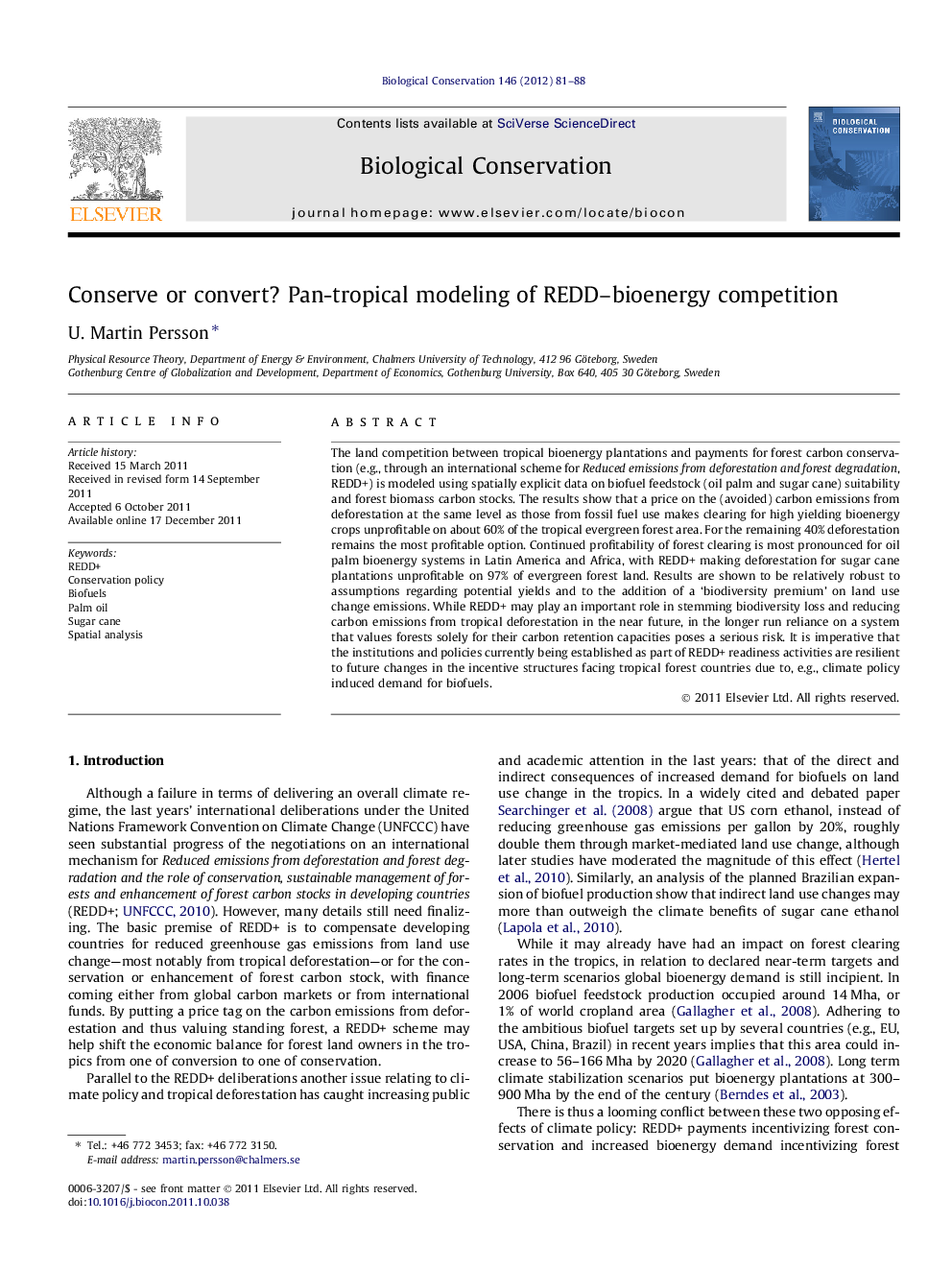| Article ID | Journal | Published Year | Pages | File Type |
|---|---|---|---|---|
| 4385468 | Biological Conservation | 2012 | 8 Pages |
The land competition between tropical bioenergy plantations and payments for forest carbon conservation (e.g., through an international scheme for Reduced emissions from deforestation and forest degradation, REDD+) is modeled using spatially explicit data on biofuel feedstock (oil palm and sugar cane) suitability and forest biomass carbon stocks. The results show that a price on the (avoided) carbon emissions from deforestation at the same level as those from fossil fuel use makes clearing for high yielding bioenergy crops unprofitable on about 60% of the tropical evergreen forest area. For the remaining 40% deforestation remains the most profitable option. Continued profitability of forest clearing is most pronounced for oil palm bioenergy systems in Latin America and Africa, with REDD+ making deforestation for sugar cane plantations unprofitable on 97% of evergreen forest land. Results are shown to be relatively robust to assumptions regarding potential yields and to the addition of a ‘biodiversity premium’ on land use change emissions. While REDD+ may play an important role in stemming biodiversity loss and reducing carbon emissions from tropical deforestation in the near future, in the longer run reliance on a system that values forests solely for their carbon retention capacities poses a serious risk. It is imperative that the institutions and policies currently being established as part of REDD+ readiness activities are resilient to future changes in the incentive structures facing tropical forest countries due to, e.g., climate policy induced demand for biofuels.
Graphical abstractProfitability (in USD/ha) of deforesting for bioenergy under a REDD+ scheme.Figure optionsDownload full-size imageDownload as PowerPoint slideHighlights► We analyze the competition between REDD+ and bioenergy on tropical forest land. ► On >40% of forest land revenues from bioenergy plantations exceed those from REDD+. ► These results are most pronounced for oil palm bioenergy in Latin America and Africa. ► Results are robust to changes in assumed bioenergy (palm oil and sugar cane) yields. ► Conservation policies need to be resilient to changes in incentives for deforestation.
